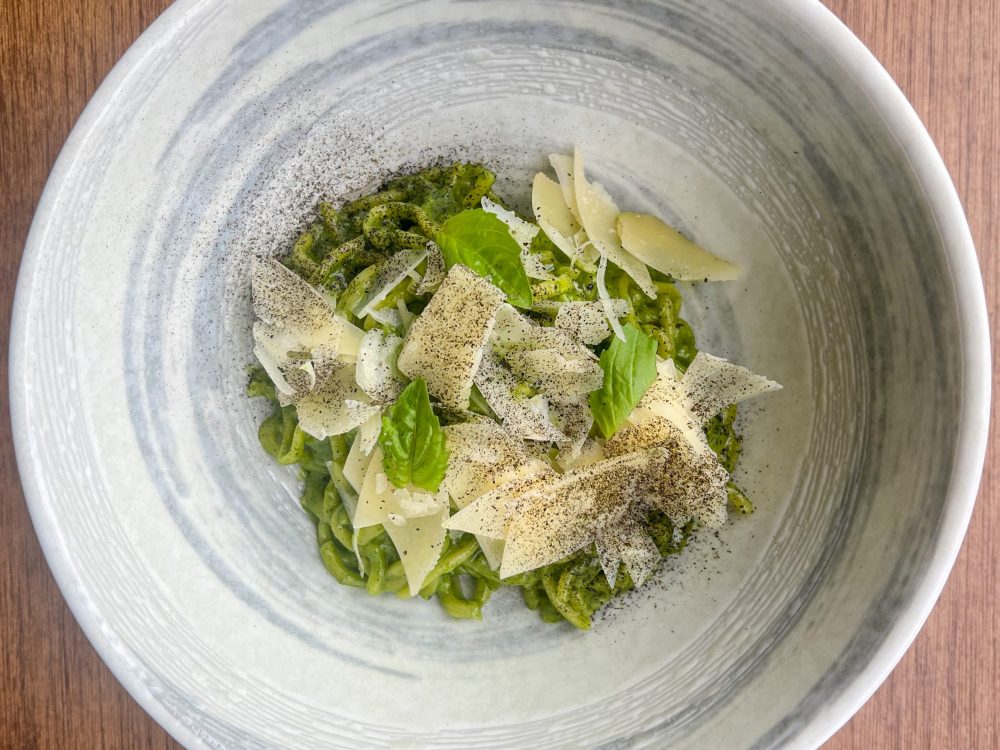On May 3, 1863, Peru and the Kingdom of Italy signed a 10-year consular treaty—establishing a formal relationship between the two nations after centuries of informal, sometimes hostile, connections. The agreement came following Peru’s abolition of slavery in 1854, which created a significant demand for labor. So, Italians came en masse to Peru’s capital, Lima. Italians actually attempted to establish colonies in several South American nations during the 19th Century, but none easier and more accepted than in Lima.
There was a growing colony of Italians—specifically Ligurians—in Lima and thus, society began to shape alongside them. Their culture influenced music and art, but perhaps the biggest contribution to Peruvian culture at the hands of the Italians was, of course, the food. It’s important to understand that Peru has historically had an open-mindedness to cuisines that other nations often lack. We see this in two common styles of foods found in Peru today: Nikkei, or Japanese-fused Peruvian cuisine, and Chifa, a fusion between Chinese cooking and traditional Peruvian/Andean cuisine.

Italian Immigrants in peru circa 19th Century | By Eugenio Courret – Courret Archives, Public Domain
And while lomo saltado (stir-fried beef with potatoes, onions and tomatoes) and arroz chaufa (a Peruvian-Chinese fried rice) may be some of the most popular dishes born out of immigration, Italians have laid their own mark on the culinary landscape of the Andean nation. One dish in particular known as “Tallarines Verdes” perhaps outlines this best.
What Is Tallarines Verdes?
Tallarines Verdes is a type of pesto popular throughout Peru. It was created when Italians brought the recipe for pesto Genovese over to Peru with them. A classic pesto Genovese usually consists of basil, pine nuts, Parmigiano Reggiano, olive oil and garlic. The ingredients are grinded in a mortar and pestle into a paste and traditionally served with trofie— a hand-rolled pasta shape popular in Liguria. However, as pesto settled down in its new home of Lima, the dish began to extend further into the reaches of Peru and with its spread, came innovation.
I sat down with Chef Luis Blasini, who flaunts his Peruvian roots all over the menu at top-rated NJ restaurant, 7 Doors Down Ramen Co. in Bloomfield, NJ, to learn more about this mystifying dish.
“So Tallarines Verdes comes from Italian influence in Lima. With them, they brought pesto, Genovese. From there, once they left, Peruvians made it their own,” he tells me.
Blasini goes on to explain the subtle differences between a traditional Genovese pesto and the decidedly Peruvian Tallarines Verdes. “Italians use Parmigiano and pine nuts. We use what we have locally; so, queso fresco, pecans or walnuts and spinach for some added green. Toss it with spaghetti or some other kind of noodle and serve it with a side of seared steak or potatoes,” says Blasini.
Potatoes are especially popular to serve alongside Tallarines Verdes in the Andean regions of Peru, which is where Blasini’s family hails from in Huancayo. Verdes also stands out from Italian pesto in that rather than being incorporated into a paste with a mortar and pestle, it is blended smoothly—creating a vibrantly green sauce with very little grit. Additionally, many add evaporated milk to the sauce for an added layer of creaminess and Goya soda crackers for depth.

Tallarines Verdes Mazeman Bowl at 7 Doors Down Ramen Co.
At 7 Doors Down, Blasini serves his own version of Tallarines Verdes in the form of a mazeman (brothless) bowl of ramen—combining two already-fused cuisines, Nikkei and Ligurian-Peruvian, together. His version uses ramen noodles instead of spaghetti. Blasini holds onto pine nuts and basil, with blanched spinach and mirin added to the mix. Three cheeses are called upon: Parmigiano Reggiano, Pecorino Romano and queso fresco. The bowl is finished off with a sprinkle of nori dust and some parm shavings. It’s the perfect way to outline 7 Doors’ brilliant concept, which boasts Japanese and Peruvian cooking without any borders.
Traditional Tallarines Verdes Recipe
Blasini shared one more gem of knowledge with me: His family’s classic recipe for Tallarines Verdes. The vibrantly herbaceous sauce—with a pop from queso fresco and toasted walnuts—coats each noodle perfectly. It’s an easy weeknight dinner that comes together in the time it takes to boil pasta. Get ready to add it to your weekly roster.
Equipment:
- Food scale
- Blender
- Pot for boiling water
- Saucepan or bowl
- Tongs
Ingredients:
- 80g spinach
- 120g Basil
- 2 cloves of garlic
- 1/2 cup vegetable oil
- 1/2 cup extra virgin olive oil
- 25g queso fresco
- 8g toasted pecans
- 20g soda crackers
- 130g whole milk
- 1 tbl salt
- 1 pound of spaghetti
Method:
- Wilt spinach and basil in a pan with vegetable oil over medium heat
- Once softened, combine with the remainder of the ingredients in a blender
- Blend until smooth and set aside
- Meanwhile, bring a pot of salted water to a rolling boil and cook spaghetti until al dente
- Drain with tongs, saving the water, and combine with verdes sauce in a saucepan or bowl
- Add pasta water as needed to adjust consistency
- Serve immediately
View this post on Instagram
About the Author/s
Peter Candia is the Food + Drink Editor at New Jersey Digest. A graduate of The Culinary Institute of America, Peter found a passion for writing midway through school and never looked back. He is a former line cook, server and bartender at top-rated restaurants in the tri-state area. In addition to food, Peter enjoys politics, music, sports and anything New Jersey.

1 comment
Thank you for that! Interesting recipe and history